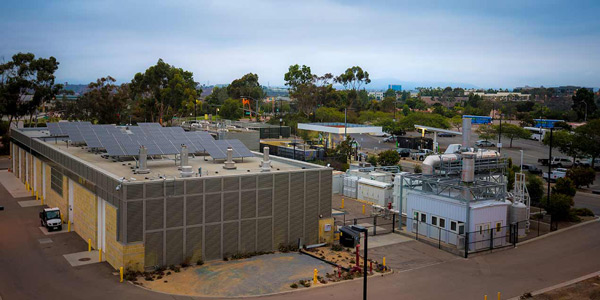By Jeffrey Marqusee
Steve Huntoon’s March 13 column “Microgrid Kool-Aid and National Security” reviews the Noblis report “Power Begins at Home: Assured Energy for U.S. Military Bases” and raised a number of issues that he claims invalidate the study’s conclusions. Huntoon’s claims and conclusions are seriously flawed.

Our report specifically acknowledges that problems with on-base distribution systems must be corrected prior to using a microgrid and in most cases this can easily be accomplished. Currently, some outages on military bases are completely due to the utilities that serve the base (Fort Irwin), while others are due to on-base infrastructure issues (Camp Lejeune). Fixing these on-base problems is well understood and routinely done. Simple activities such as tree trimming, routine maintenance and, when needed, undergrounding of distribution systems can and do reduce the issue to near zero. Fort Belvoir has demonstrated this through these actions over the last several years.
The main reason it has not been done at all bases is well recognized at the Defense Department and is the driver for utility privatization. Maintenance of on-base utility systems has been underfunded for decades. Fort Belvoir is a perfect example. Upon privatizing the on-base utilities, the frequency of outages attributed to on-base issues began to rapidly decline to near zero.
Huntoon argues that microgrids place military installations at risk to cyber threats. He implies that this risk should not be taken.
As the report explicitly states, cyber risks are real and must be addressed, but this was not the focus of our study. If you believe that cyber risks should be always avoided, then you cannot have advanced meters, smart buildings or network anything (including weapon systems). You network things because it buys performance advantages, as in the case of microgrids, and if you own the network you can manage that risk. Huntoon seems unaware that cyber protection for microgrids exists. Cybersecurity solutions for microgrids have been demonstrated on bases by the government’s Environmental Security Technology Certification Program and its Smart Power Infrastructure Demonstration for Energy Reliability and Security (SPIDERS) program.
Huntoon says, “please note one other glaring oversight in the study. This one involves the estimated cost of microgrids.” He claims the study’s estimated costs are grossly wrong by comparing numbers he incorrectly quotes from the report with recent costs for a project at Marine Corps Air Station Miramar.
His comparison of our estimates and a real-world example at Miramar are grossly in error. He quotes our number for the capital costs of an all diesel generator system rather than the costs for one that is half natural gas and half diesel like Miramar. The numbers he should have quoted from the report, which are relevant to Miramar, are twice the numbers he does quote. In addition, he ignored the costs of two microgrid control stations as well as other upgrades. In fact, our cost estimates, constructed prior to the award of the Miramar contract, when compared apples to apples is within 10% of the actual costs.
In the conclusion, Huntoon states, “And speaking of fact, the nation’s ‘flagship’ microgrid at the University of California, San Diego flunked its acid test in the Southwest Blackout of 2011. The campus shut down with the rest of San Diego.” He implies that microgrids don’t work.
No one in the microgrid technical community believes that the U.C. San Diego microgrid is the “flagship” example. Using a decade-old, university-based microgrid as an example is strange at best. Dozens of microgrids have been demonstrated in recent years. They all operate as designed during outages and provide assured power. For example, the White Oak microgrid, which is described in the report, has maintained power during dozens of outages, never experienced a failure and is saving money each year.
Jeffrey Marqusee, Ph.D., is chief scientist for Noblis, a nonprofit science, technology and strategy organization whose clients include many federal government agencies.




